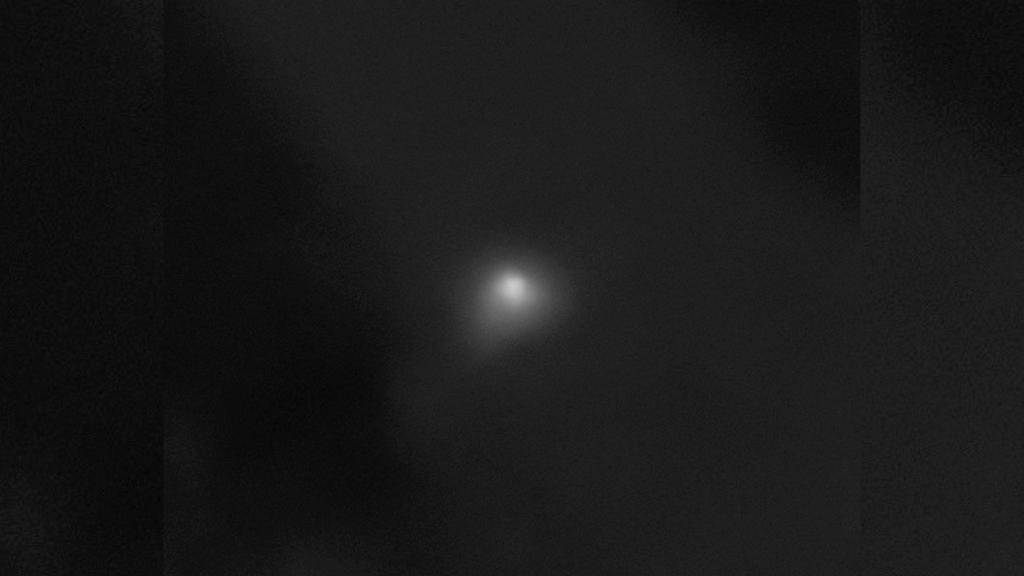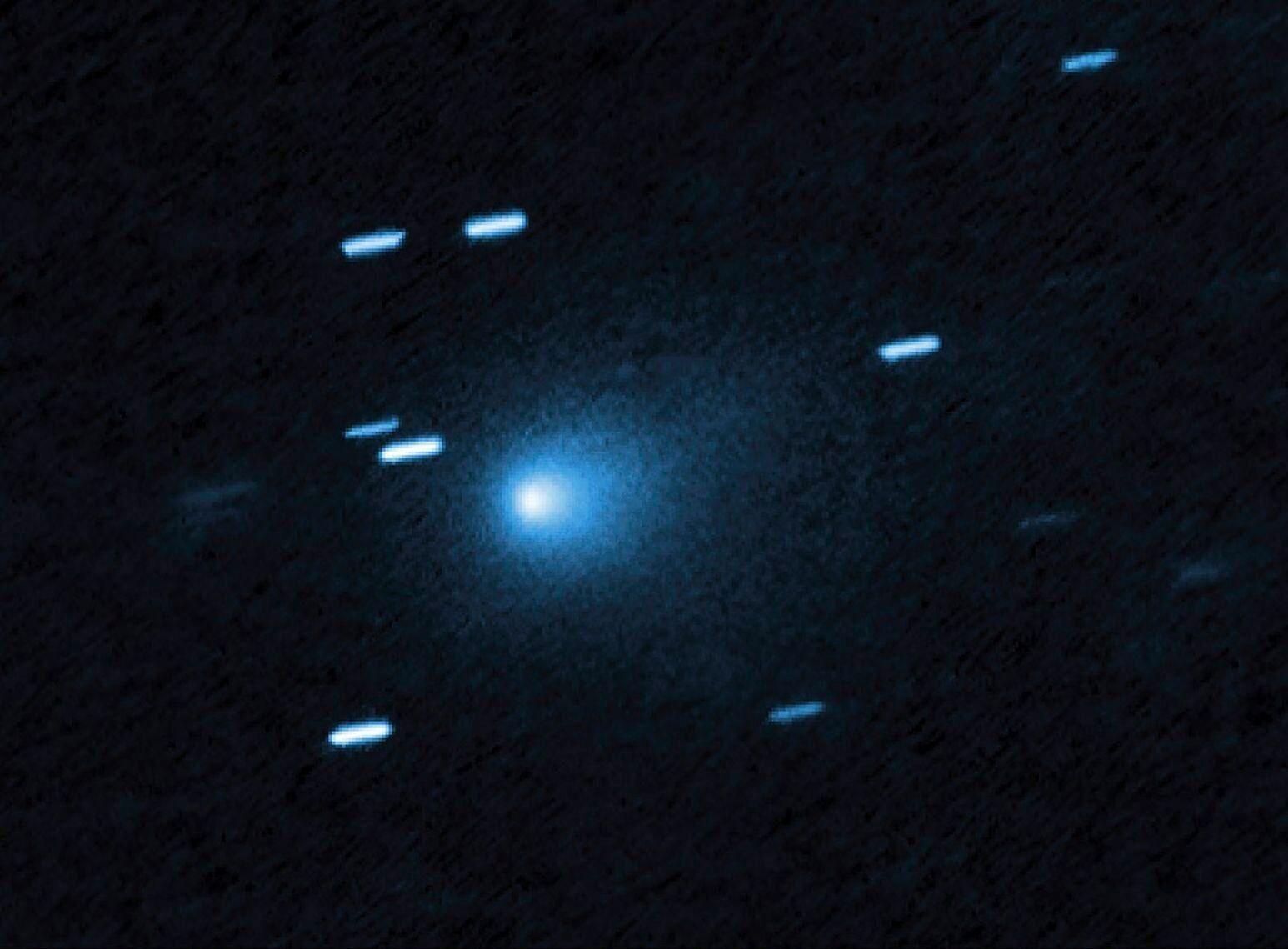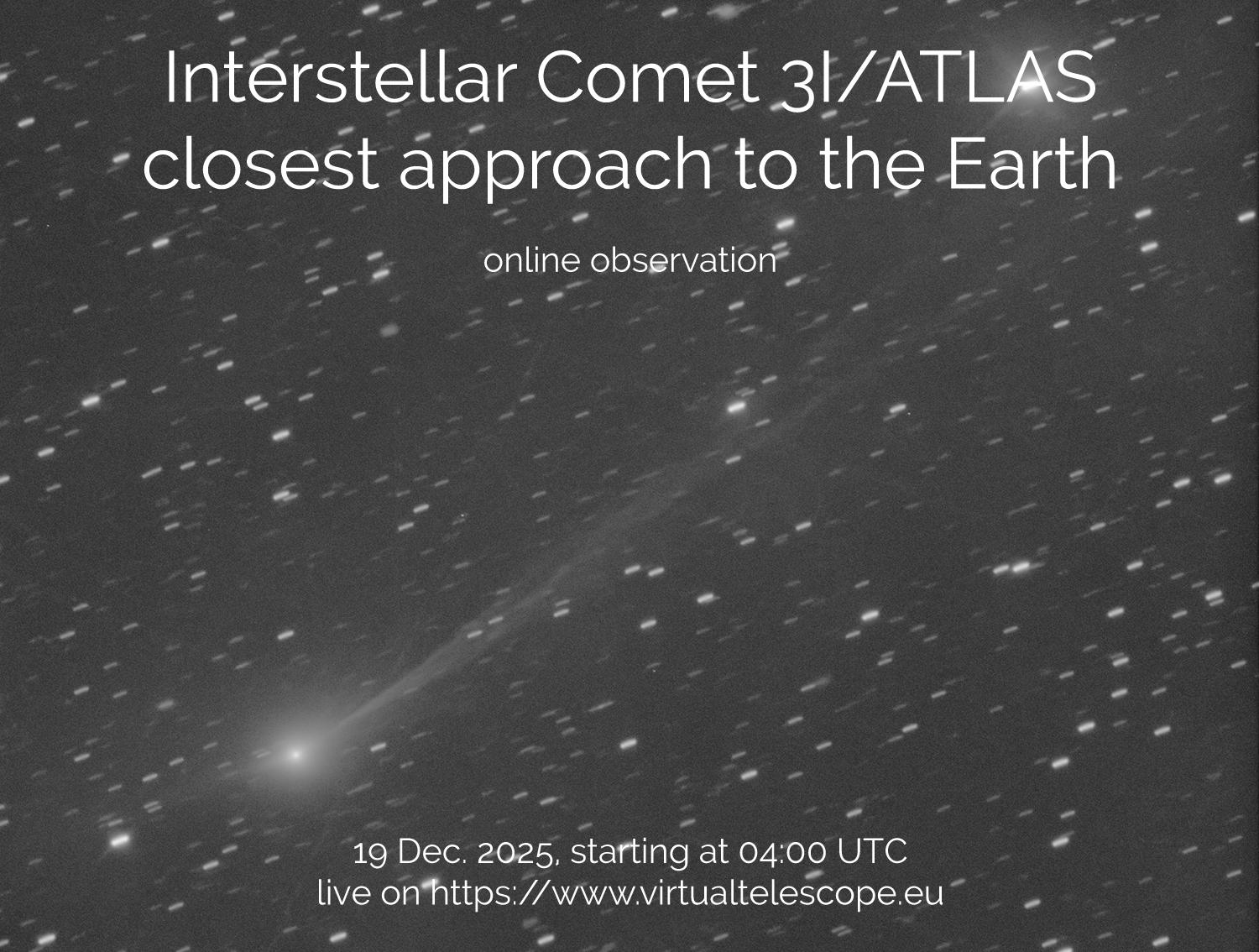- NASA and ESA confirm that 3I/ATLAS is an interstellar comet with no risk to Earth
- Extensive observation campaign: Mars, STEREO, SOHO, PUNCH, Psyche, Lucy, Hubble and Webb
- Notable composition in CO₂ and activity with complex jets and tails, within expectations
- Closest approach to Earth on December 19, at about 274 million kilometers

El interstellar comet 3I/ATLAS has launched a unprecedented observation campaign by NASA and ESAwith instruments distributed throughout the Solar System. From Europe, the tracking relies on the participation of key missions and observatories, reinforcing the role of the scientific community in Spain and the EU in the study of these rare visitors.
Space agencies have reiterated that this is a natural comet, with characteristics fully compatible with other comets, although Its origin outside our neighborhood makes it an exceptional opportunityThere are no technological indications or anomalous signals: The object maintains a trajectory and activity that fit the models of degassing as it approaches the Sun.
What is 3I/ATLAS and how was it detected?

3I/ATLAS is the third interstellar object identified crossing our Solar System, after 1I/ʻOumuamua and 2I/Borisov. It was detected on July 1 by the ATLAS (Asteroid Terrestrial-impact Last Alert System), a NASA-funded network of telescopes in several countries, including one on Mount Teide (Spain)...in addition to facilities in Chile. Its hyperbolic trajectory betrayed its foreign origin from the beginning.
Initial estimates from observations with Hubble and other instruments place the core within a range of hundreds of meters to several kilometerswith an active coma and a tail whose morphology has evolved as it has received greater solar radiation. Its speed exceeds 200.000 km/h, with higher peaks near perihelion, within what is expected for an interstellar comet.
From a European perspective, the ESA has highlighted the relevance of 3I/ATLAS for comparison physical and chemical processes with those of comets formed near the Sun. These comparisons allow us to refine the real differences versus the merely apparent ones due to the geometry of observation or the solar environment.
A coordinated campaign: Mars, heliovision and probes en route
On October 3, 3I/ATLAS passed to about 30,6 million km from Mars, an opportunity that several NASA spacecraft took advantage of: the MRO orbiter obtained one of the closest imagesMAVEN took ultraviolet data to unravel its composition, and the Perseverance rover managed to capture the object from the Martian surface.
Heliospheric missions allowed scientists to track it after it disappeared from Earth. The observatory STEREO recorded it between September 11 and October 2, while SOHO (joint ESA/NASA mission) He observed it in mid-to-late October. PUNCH, recently launched, It provided a sequence of its tail during the second half of September and the beginning of October.
Far from Earth, the probes psyche y Lucy They took advantage of their trajectories to photograph the comet in September: Psyche took several shots from about 53 million kilometers away, and Lucy captured a series from about 386 million kilometers away. which, stacked, allow analysis of the comma-tail structure.
Also Hubble and James Webb have contributedThe latter is crucial for observing the comet in the infrared as it moves away and becomes inaccessible in visible light, thus closing a multiple coverage and complementary unprecedented to date for an object of extrasolar origin.
Composition and activity: complex tails, jets and prominent CO₂

The combined visible, ultraviolet, and infrared data point to a vigorous activity of the comet, with emissions of gas and dust that explain changes in the tail and small non-gravitational accelerations, something common in these bodies. Independent observations have shown complex structures in its tail, with the presence of jets and even configurations reminiscent of a anti-tail due to the effect of observation geometry.
Far from extraordinary interpretations, scientific teams point out that these types of patterns can arise from multiple active zones on the surfacean anisotropic distribution of ices and interaction with the solar wind. The possible antitail, for example, can be explained by the perspective with respect to the orbital plane and the distribution of emitted dust.
In the field of chemistry, Ultraviolet and infrared measurements suggest a fraction of CO₂ The water content is relatively high compared to several comets in the Solar System. There are natural explanations: differential exposure to radiation throughout its history or a colder, CO₂-rich formation environment, consistent with an origin outside our system.
NASA and ESA experts insist that nothing observed requires resorting to unnatural interpretations. The properties of color, brightness, dynamics, and spectrum are compatible with a ice comet that activates when heated, without tech signatures or artificial signals.
Dates, visibility and Europe's role

The closest approach to Earth is scheduled for December 19, at a distance of about 274 million kmwithout implying any risk. Perihelion occurred at the end of October, at which point the observational geometry has facilitated its tracking from ground-based telescopes.
In Europe, and particularly in Spain, the scientific community is taking advantage of this window to refine measures of size, shape and activityas well as to compare its behavior with that of well-characterized comets from the solar neighborhood. The ATLAS network, with a station at Teide, and teams from the IAC and other European centers are contributing to this coordinated effort.
Looking further ahead, the comet will continue on its path and head back towards the interstellar space after crossing Jupiter's orbit in spring 2026. The James Webb will be key to squeezing the last opportunities in infrared when the brightness decreases in visible light.
For those who wish to delve deeper, NASA maintains official resources and regular updates with open material: informative link and its educational portal in Spanish with reference content, aimed at the general public and the educational community.
3I/ATLAS is confirmed as an interstellar comet Observed in a coordinated manner by NASA and ESA, with contributions from Europe and Spain: safe distance from Earth, activity compatible with comet physics, suggestive chemical signals, and an observation schedule that will allow lessons to be learned about how they form and evolve small bodies in other star systems.
I am a technology enthusiast who has turned his "geek" interests into a profession. I have spent more than 10 years of my life using cutting-edge technology and tinkering with all kinds of programs out of pure curiosity. Now I have specialized in computer technology and video games. This is because for more than 5 years I have been writing for various websites on technology and video games, creating articles that seek to give you the information you need in a language that is understandable to everyone.
If you have any questions, my knowledge ranges from everything related to the Windows operating system as well as Android for mobile phones. And my commitment is to you, I am always willing to spend a few minutes and help you resolve any questions you may have in this internet world.